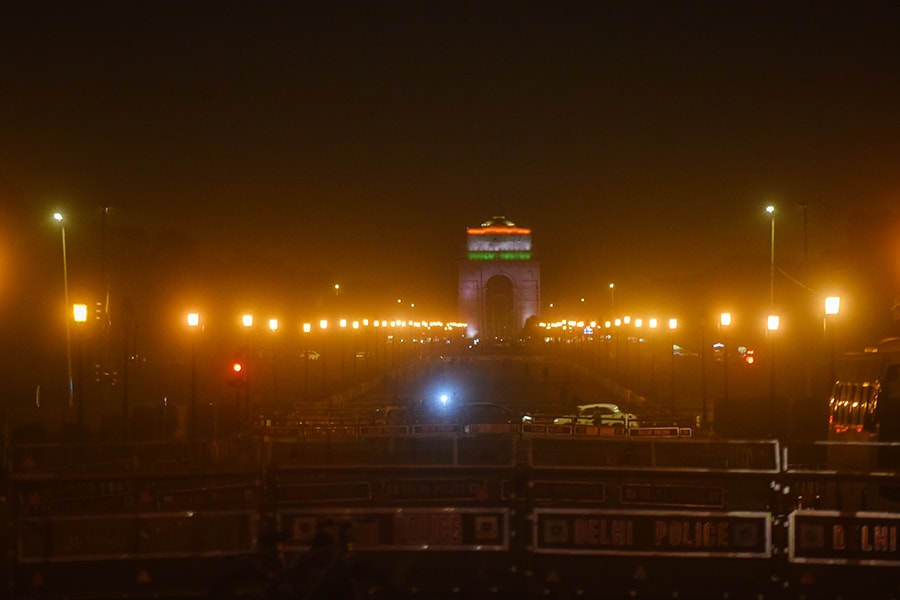
What happens when COVID-19 meets toxic air? India is about to find out
One of the most common symptoms of severe coronavirus cases is breathing difficulty. And doctors say that if the ambient air suddenly becomes more toxic, as it does every year around this time in northern India, then more people who become infected by the virus might end up in the hospital or die
 A view of India Gate engulfed in a mild haze on October 14, 2020 in New Delhi, India. Air quality in capital deteriorated as the burning of crop waste in fields sent smoke billowing across the north of the country. A smoggy haze settled over the city, reducing visibility significantly, as the Air Quality Index (AQI) rose past 300 on a scale of 500, indicating very poor conditions that pose a risk of respiratory problems, according to the federal pollution control boards guidance. (Photo by Amal KS/Hindustan Times via Getty Images)
A view of India Gate engulfed in a mild haze on October 14, 2020 in New Delhi, India. Air quality in capital deteriorated as the burning of crop waste in fields sent smoke billowing across the north of the country. A smoggy haze settled over the city, reducing visibility significantly, as the Air Quality Index (AQI) rose past 300 on a scale of 500, indicating very poor conditions that pose a risk of respiratory problems, according to the federal pollution control boards guidance. (Photo by Amal KS/Hindustan Times via Getty Images)
NEW DELHI — As a thick quilt of smog wrapped itself around New Delhi on Thursday, signaling the start of the fall pollution season, doctors and scientists warned that the deteriorating air quality could make the city’s COVID-19 problems even worse.
One of the most common symptoms of severe coronavirus cases is breathing difficulty. And doctors say that if the ambient air suddenly becomes more toxic, as it does every year around this time in northern India, then more people who become infected by the virus might end up in the hospital or die.
“If two people are shooting at the lungs, then obviously the lungs will have more problems,” said Arvind Kumar, a chest surgeon and founder of the Lung Care Foundation in New Delhi, a group that raises awareness about respiratory problems.
India is now struggling with two major health challenges that are both assaulting the respiratory system and peaking at the same time.
Coronavirus cases are spreading far and wide, putting the country on track to have the largest reported virus caseload in the coming weeks. With 7.3 million reported infections, it is just behind the United States’ 7.9 million. And each day, India outpaces the United States in new infections by around 10,000 more cases per day, even as India’s death rate remains much lower.
©2019 New York Times News Service




